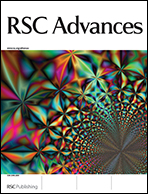Structural coloration in nature
Abstract
Nature's color has three main sources: pigments, structural colors and bioluminescence. Structural color is a special one, which is the color produced by micro- or nano-structures, and is bright and dazzling. The most common mechanisms of structural colors are film interference, diffraction grating, scattering and photonic crystals. Biological colors are mainly derived from film interference, which includes thin-film and multi-film interference. The diffraction grating mechanism is found in, for example, seed shrimp, mollusk Haliotis Glabra and the Hibiscus trionum flower. Scattering includes coherent and incoherent scattering. Well-known examples of coherent scattering include colors produced by brilliant iridescent butterfly wing scales and avian feather barbules, such as the peacock's tail. Examples of colors produced by photonic crystal structures include opal in beetles and iridescent spines in the sea mouse. Coloration changes occur through structural changes for camouflage, predation, signal communication and sex choice. This paper presents an overview of lessons from nature and various relevant mechanisms. Examples of bioinspired fabrication methods and applications are also presented in this paper.


 Please wait while we load your content...
Please wait while we load your content...